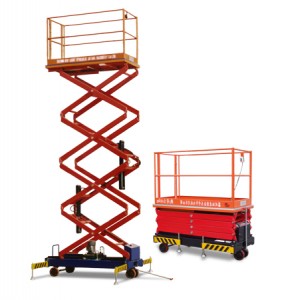Aerial Work Platform Safety cannot be stressed enough. On average, 50 people a year are killed while using them. This number does not even encompass accidents involving the operator and bystanders; both reported and not reported. Most, if not all, of the deaths and injury can easily be avoided by a few simple rules. Following these can safe lives.
Left and Right are Great; Add Up and Down to Your List
As an aerial work platform (AWP) operator you should have a spotter at all times, not just when you are driving from point A to point B. While a spotter is there to keep the operator from pedestrians or to solve blind corner issues, they should still stay with the lift while it is extended and in operation. The reasoning is two-fold:
- To warn pedestrians that there is overhead work going on and direct them around the work area.
- To spot the person working in the basket.
The first reason is pretty self explanatory. The second, not so much. There are generally a second set of controls on the base of every aerial work platform. Should the person in the basket come under distress or fall from the basket (hopefully with their harness and lanyard secured) the spotter should be there to lower the basket. So, guiding your “buddy” to the work area then getting a cup of coffee is putting a lot of people in danger; including your buddy.
Didn’t We Say Look Up and Down?
When elevating the platform, all hands and feet should be inside the basket. Not on top of the handrail or propped up on the kickboard- In. The. Basket. Why? When working indoors or next to structures you want to lift to take scraping damages, not your appendages. A distracted worker or someone not looking up has the chance to lose a hand or part of a foot for no reason whatsoever. If you are travelling forward, left, right, or backwards, that is where you are looking- apply this to going up as well.
When detracting or bringing your lift down, five things need to happen before you begin to lower your AWP:
- Operator tells the spotter they are coming down.
- The Spotter checks the perimeter
- Spotter yells out “all clear” and motions to begin lowering.
- The Operator visually re-verifies they are clear to lower.
- Operator honks their horn, calls out that they are lowering, then lowers the platform.
Sound like a lot? It’s less 10 seconds. Once the operator and spotter are on the same page, this is a very effective way to work. If you get in the habit of being safe every time you perform any task on the job, then you are getting into the habit of saving lives.
